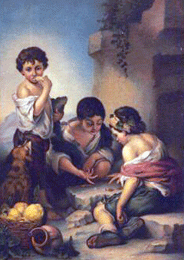 |
Progress Publishing Co. |
 |
|
Bingo History |
 |
Progress Publishing Co. |
 |
|
Bingo History |

![]()

![]()
Bingo History
*******************************************************************
Bingo Origins
Bingo History in Europe
Bingo History in the United States
*******************************************************************
Bingo Origins
According to a historical research on gambling, Bingo’s ancestral history can be traced to the Italian game of Lotto popular in the 18th century Italy. Lotto itself evolved from the Italian Lottery established in 1539. Lotto’s principle structure inherited by Bingo remained the same throughout the Bingo history without any significant changes. Only the overall pool of the numbers used during the game and the players’ cards with the printed numbers and possible winning patterns on the cards went through changes leaving the nature of the game intact.
Lotto used the pool of ninety numbers written on wooden plaques, which were drawn randomly from a bag or some other primitive container. The numbers were compared by the players with the numbers they had on the bought Lotto cards. Lotto cards had nine vertical and three or five horizontal rows of numbers. The first player who was lucky to match a horizontal row of the numbers with some of the pulled random numbers was declared a winner and awarded a prize. The player’s stake was the cost of his Lotto card. The prizes were the portion of the total amount paid for all Lotto tickets. The rest of the collected money went to the operator of the game to cover the expenses and guarantee the profit.
Modern Bingo History in Europe and United States
In its original Lotto form with slight modifications, Bingo was played throughout the 19th century in Europe and United States. In Europe the game was most popular in Italy and Germany. It was also widespread in England. In United States it was played in the different parts of the country in gambling parlors and social clubs. At the end of the 19th century and the beginning of the 20th century Lotto was gradually replaced by the faster version that became modern Bingo.
During the World war I Bingo became very popular among English troops. The players called the gambling hall “the house” and the operators used the call “housey-housey” to gather the players for the game. That call gave the game its English name “housey-housey”. In the same period of Bingo history and under the same name the game found the popularity in Australia and New Zealand. English players used Bingo cards with 25 numbers in 25 squares formed by 5 horizontal and 5 vertical rows.
American modern Bingo history started in the Depression era thanks to one of the carnival operators who traveled to Germany where he saw how the game was organized and played. He saw the enormous popularity the game enjoyed among the Germans. After returning to the United States he opened a booth in his carnival to offer Bingo to the public. He instructed the players to cover matched numbers on their cards with beans and shout “Beano” as soon as they covered horizontal, vertical or diagonal rows on their cards. “Beano” became the current name of the game. During that carnival period in the Bingo history, a player’s card had 5 vertical and 5 horizontal rows creating 25 squares. 24 squares were filled with numbers and the center square was a “Free” space, which was always considered to be covered. One day during the game, one of the players became so exited he or she shouted “Bingo” instead of “Beano”. “Bingo” sounded harder and more exotic than “Beano” and it stuck as the new name of the game. Now, it’s a current name of the game universally accepted.
The Depression era in the Bingo history was an ideal environment for the game to boost its popularity. The cost of playing the game was only few cents and a possible prize of the few hundred dollars was a great help for struggling families during hard economic times. In result, in the 1930s Bingo spread all over the country.
In an essence, Bingo is a lottery-type game. It has all 3 characteristics established by the government that classify it as lottery: 1) a participant has to pay money to play, 2) the game is the game of chance and not the game of skill and 3) a winner receives a prize. Because of the Bingo’s lottery nature the game was illegal at one time or another in many parts of the country. In the early 20th century it was played free of the harassment by the Law in Atlantic City and resort areas of California and Florida. In many states where Bingo was illegal it was played anyway because it was a big part of fund-raising activities by the churches and charitable organizations. Authorities, reluctant to antagonize the churches, were closing the eyes and letting the game to be played even if it was banned in their jurisdictions.
The important time in the Bingo history in the United States was early 1950s when the game was legalized in New Jersey and New York. The next pivotal moment in the Bingo history was 1976 when Indian tribes received the permission from federal government to open up bingo parlors to increase revenues for the reservations. At the present time the popularity of Bingo is bigger than ever with the thousands of Bingo gambling establishments operating all over the country.
Copyright Progress Publishing Co. 2006
Selected References:
| Harry W. Parker Jr. Bingo-Keno | Leo Markun A History of Gambling |
| David G. Schwartz Roll the Bones/The History of Gambling | Alice Fleming Something for Nothing/A History of Gambling |
| Carl Sifakis The Encyclopedia of Gambling | Alan Wykes The Complete Illustrated Guide to Gambling |